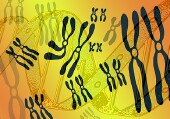
WEDNESDAY, Sept. 5 (HealthDay News) — Scientists’ understanding of what causes human disease — genetically speaking — just got a bit clearer and infinitely more complicated all at the same time.
A study appearing online Sept. 5 in the journal Science provides a blueprint not only of genes that are involved in different disorders, but also of the “switches” that control those genes and how these two elements interact.
The “map” could substantially alter how scientists approach the genetics of diseases and, eventually, how treatments and cures are devised, the researchers said.
“This is a paradigm shift in terms of how we look at the genetic basis for disease,” said study senior author Dr. John Stamatoyannopoulos, an associate professor in the departments of genome sciences and medicine at the University of Washington in Seattle. “I think it’s going to change considerably how people use the genome to identify targets for pharmaceuticals.”
Previous genetics research had focused mainly on finding a specific gene or gene variant for a particular disease, the conventional wisdom being that specific variants in that gene would affect protein sequences, and the altered protein sequences would determine if a person was healthy or if he or she developed a disease.
The problem is that many of these studies fingered regions of the human genome that don’t actually contain genes, Stamatoyannopoulos explained. In fact, genes constitute only 2 percent of the human genome.
“Hidden in the remaining 98 percent are instructions that basically tell the genes how to switch on and off,” he explained.
Stamatoyannopoulos and his colleagues analyzed 349 tissue samples from adults, and then cross-referenced the results with existing genetic data on more than 400 diseases and physical traits, such as height.
The result: a clearer picture of what’s inside that mysterious 98 percent of the genome.
The research revealed that, with diseases, “it’s not necessarily the gene but probably a network of genes that are working together,” and these “switches” or “regulatory” DNA orchestrate entire networks, Stamatoyannopoulos said.
The authors of an accompanying editorial agreed that the finding could shed light on disease mechanisms.
“Many of these variations in DNA that are associated with disease are not directly affecting protein sequences,” explained Eric Schadt, co-author of the accompanying perspective and chairman of genetics and genomic sciences at Mount Sinai School of Medicine in New York City. “They are affecting regions in the DNA that regulate whether genes should be expressed or not, and at what level. They’re playing more of a regulatory role versus a protein-function role. We are able to see that loud and clear in [this] data.”
Three-quarters of the diseases studied had links to regulatory DNA, and many of these aberrations were already at work in the womb.
The researchers also found that many common diseases, such as Crohn’s and lupus, that seem very different, may actually share some of the same regulatory genes.
With this new information, “we can start understanding not only what disease do you have but what subtype do you have, what pathways are affected and what treatments are most beneficial for those particular subtypes,” said Schadt.
“This enables us to develop a more granular view of disease, of the processes underlying disease, and that is going to enable a personalized medicine sort of approach,” he added.
More information
The Human Genome Project has more on human genetics.

